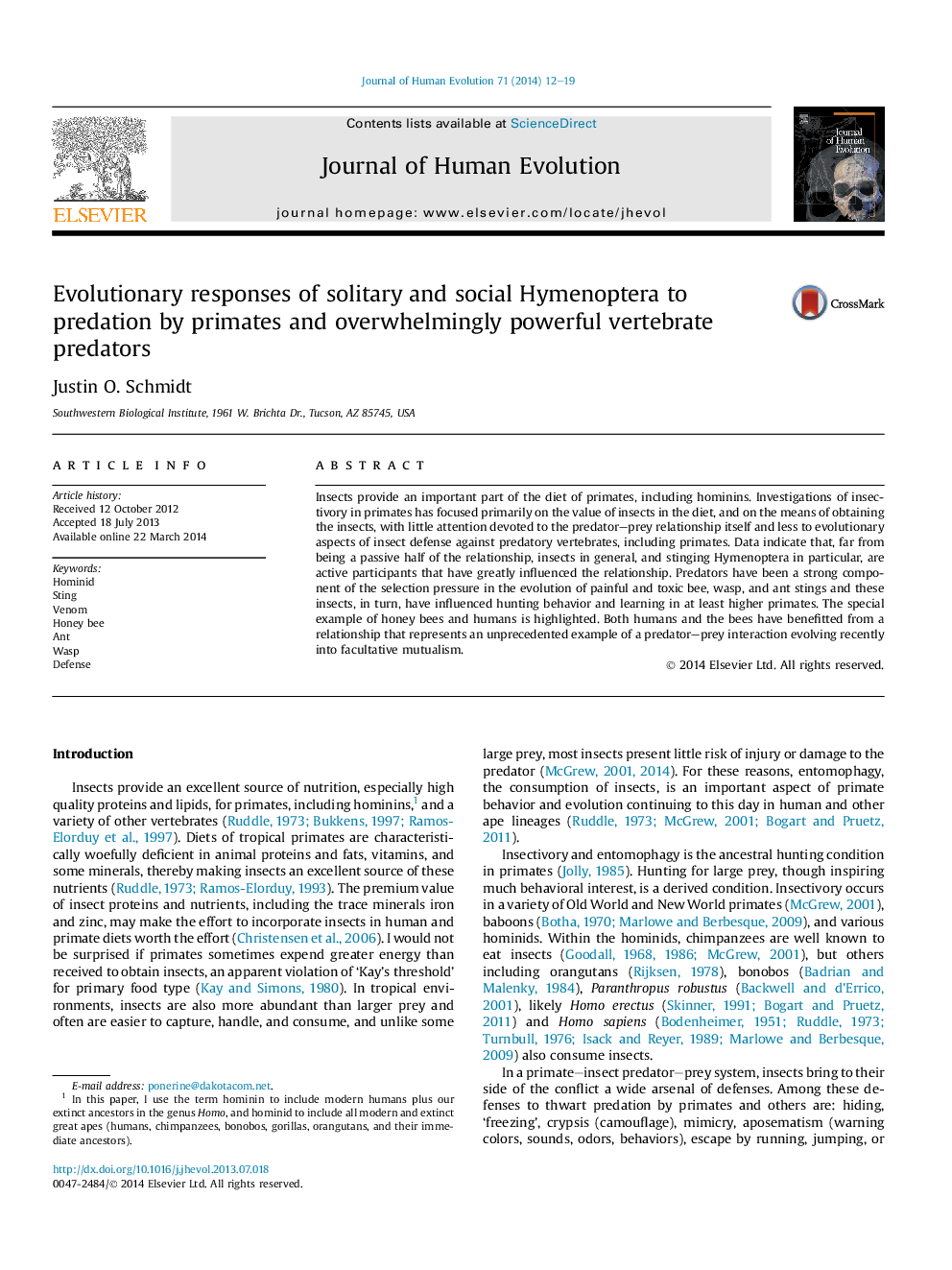| Article ID | Journal | Published Year | Pages | File Type |
|---|---|---|---|---|
| 4556046 | Journal of Human Evolution | 2014 | 8 Pages |
Insects provide an important part of the diet of primates, including hominins. Investigations of insectivory in primates has focused primarily on the value of insects in the diet, and on the means of obtaining the insects, with little attention devoted to the predator–prey relationship itself and less to evolutionary aspects of insect defense against predatory vertebrates, including primates. Data indicate that, far from being a passive half of the relationship, insects in general, and stinging Hymenoptera in particular, are active participants that have greatly influenced the relationship. Predators have been a strong component of the selection pressure in the evolution of painful and toxic bee, wasp, and ant stings and these insects, in turn, have influenced hunting behavior and learning in at least higher primates. The special example of honey bees and humans is highlighted. Both humans and the bees have benefitted from a relationship that represents an unprecedented example of a predator–prey interaction evolving recently into facultative mutualism.
